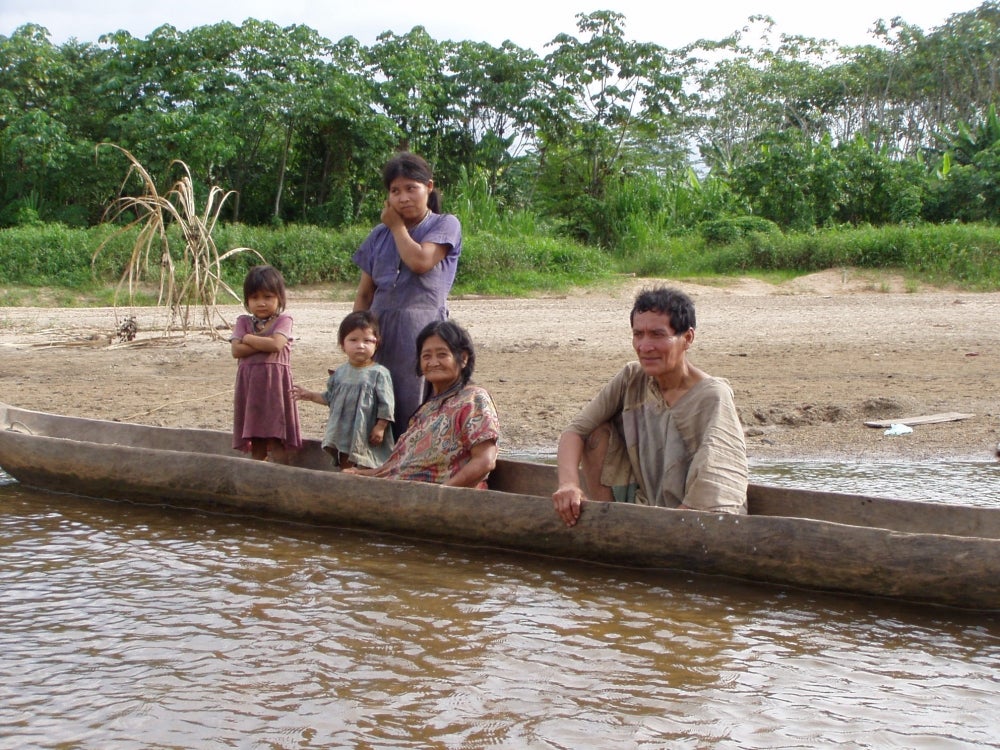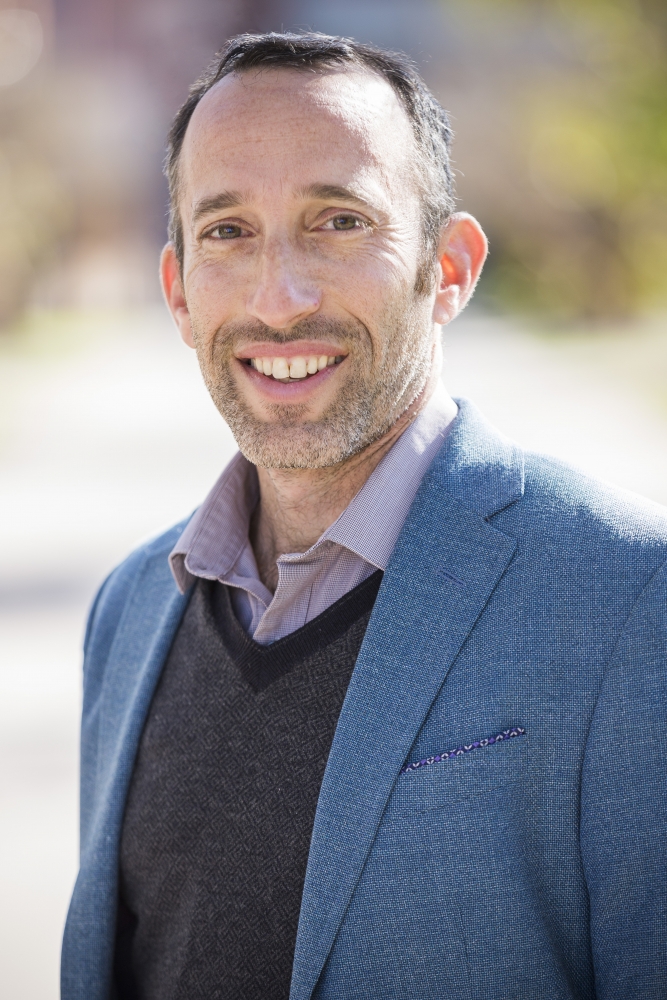
Thanks for the Memory

It’s an imperative that has been borne out repeatedly over recent decades: Unraveling the relative contributions of traditional, well-known risk factors like diet and physical activity, along with those less well-studied — infection, air pollution and social isolation — is needed to better understand how lifestyle affects our risk of dementia and other chronic diseases of aging.
Michael Gurven, a professor of anthropology and chair of the Integrative Anthropological Sciences Unit at UC Santa Barbara, has been working to do exactly that by collaborating with Indigenous communities in South America for over two decades.
A new paper by an international team of researchers including Gurven and collaborators from USC and Chapman University, published today in the journal Alzheimer’s & Dementia: The Journal of the Alzheimer’s Association, underscores the profound relationship between lifestyle and cognitive health. Their study reveals that two Indigenous groups native to the Bolivian Amazon, who practice a subsistence lifestyle of slash-and-burn farming, fishing, hunting and gathering, have among the lowest rates of dementia in the world.
The researchers found that among older Tsimane and Moseten people, only about 1% suffer from dementia. In contrast, 11% of people age 65 and older living in the United States have dementia, according to the Alzheimer’s Association.
“Many assume that dementia was rare in our ancestral past, mainly because few lived through their 80s, when dementia becomes most visible,” said Gurven, who is a co-director of the Tsimane Health and Life History Project (THLHP), funded by the National Institute on Aging. “But even with this large sample of older adults, we just don’t see Alzheimer’s disease.”
“Something about the non-industrial subsistence lifestyle appears to protect older Tsimane and Moseten from dementia,” noted Margaret Gatz, the lead study author and professor of psychology, gerontology and preventive medicine at the Center for Economic and Social Research at the USC Dornsife College of Letters, Arts and Sciences.
Researchers used computed tomography (CT) brain scan images, cognitive and neurological assessments and culturally appropriate questionnaires — facilitated by a local team of trained bilingual Tsimane research assistants and Bolivian physicians — to diagnose dementia and cognitive impairment among the Tsimane and Moseten.
The new study found only five cases of dementia among 435 Tsimane and just one case among 169 Moseten age 60 and over.
In the same over-60 groups, the research team diagnosed about 8% of Tsimane and 10% of Moseten with mild cognitive impairment (MCI), which is typically marked by early stage memory loss or decline of other cognitive ability, such as language or spatial perception. MCI is often viewed as the stage between normal cognitive aging and more serious dementia. The study’s authors pointed out that these rates are more comparable to MCI in high-income countries like the U.S.
Researchers were surprised to find that the study participants with dementia or MCI frequently had unusual and prominent calcifications of their intracranial arteries. These participants frequently displayed Parkinsonian symptoms during neurological examinations and cognitive deficits in attention, spatial awareness and executive functioning.
Although calcifications were more common among the cognitively impaired, researchers also observed these vascular calcifications in the CT scans of those without dementia or MCI. They say more research is needed to understand the role of vascular factors as well as infectious and inflammatory disorders — which are highly prevalent in these populations — along with other risks for dementia.
Comparing dementia among Indigenous groups
The roughly 17,000 Tsimane remain physically very active throughout their lifespans, and most of the food they eat comes from their labor in the forest. The 3,000 Moseten also reside in rural villages and engage in subsistence agricultural work. Unlike the more isolated Tsimane, they live closer to towns and have schools, access to clean water and medical services, are fluent Spanish speakers and are more likely to be literate.
The study authors compared their results to a systematic review of 15 studies of Indigenous populations in Australia, North America, Guam and Brazil. That earlier review found dementia prevalence ranging from 0.5% to 20% among Indigenous older adults.
The fact that Indigenous populations in other parts of the world have high rates of dementia may be due to a higher amount of contact with — and adoption of lifestyles of — their non-Indigenous neighbors. They also face greater risks of diabetes, hypertension, alcohol abuse, obesity and cardiovascular disease.
These dementia risk factors are extremely low among the Tsimane and Moseten populations. Prior research published in The Lancet showed that the Tsimane people have extraordinarily healthy hearts in older age and the lowest prevalence of coronary atherosclerosis (a disease that shows in the form of fatty deposits inside arteries) of any population known to science. This distinction may be linked to their subsistence lifestyle.
“That some Indigenous populations, like in Australia, show high rates of dementia, whereas we show very low rates in the Bolivian Amazon,” said Gurven, “suggests that when lifestyles radically change, Indigenous populations can be at even greater risk of dementia and other modern scourges than their non-Indigenous neighbors.”
Other studies published in 2021 showed that the Tsimane and Moseten show minimal atrial fibrillation, another indicator of healthy hearts, and less brain atrophy than their American and European peers.
Researchers say that in contrast to the Tsimane, lifestyle factors in higher-income countries — including a sedentary lifestyle, diets rich in sugars and fats, and altered immune system regulation from reduced exposure to different types of parasites — contribute to heart disease and may also accelerate brain aging.
A race for Alzheimer’s disease solutions
Aging is the most important known risk factor for Alzheimer’s and other dementias. Converging evidence points to low formal education, midlife hypertension and diabetes, cardiovascular diseases, physical inactivity and — most recently — air pollution as the major modifiable risk factors for dementia and Alzheimer’s disease.
An aging global population, along with the proliferation of those modifiable risk factors, will lead to a tripling of the number of people with dementia worldwide by 2050, to more than 152 million, according to estimates.
“We’re in a race for solutions to the growing prevalence of Alzheimer’s disease and related dementias,” said Hillard Kaplan, a senior co-author and a professor of health economics and anthropology at Chapman University, and a co-director of THLHP. “Looking at these diverse populations augments and accelerates our understanding of these diseases to help generate new insights.”
The international team is currently re-visiting Tsimane and Moseten villages to follow up on those who were previously assessed, and to check for new cases. “We’re also exploring whether Tsimane and Moseten have any genetic protection against cognitive aging. We also are trying to better understand how vascular and infectious processes may contribute to the intracranial calcification that was surprisingly so common in most adults.”
“Despite these and other risk factors, the fact that dementia is rare among both Tsimane and the more acculturated Moseten suggests that a healthy, active lifestyle can really make a difference.”



